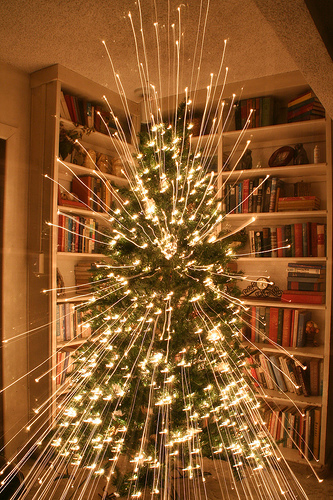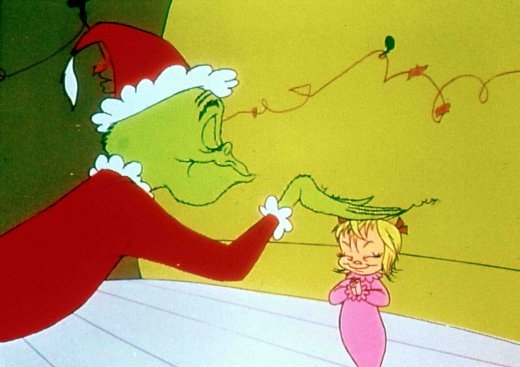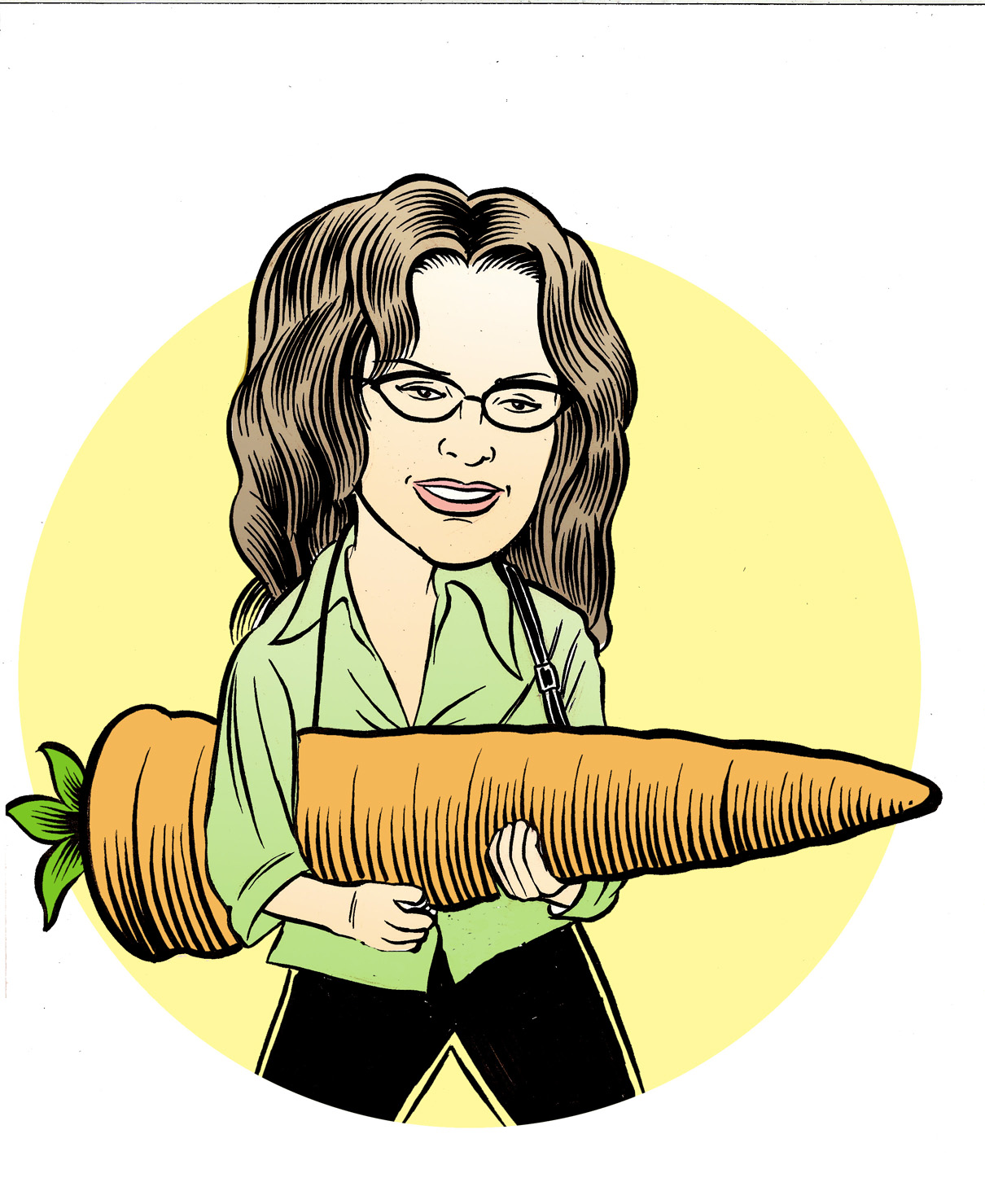BY ELIZABETH FIEND LIVING EDITOR Christmas causes cancer. You knew it would come to this sooner or later. Okay, OK, Christmas doesn’t cause cancer, but Christmas trees might, and I’ll get to how both real and fake ones might lead to cancer. But the real point of this column is: If you have a real tree, don’t throw it in the trash! Recycle your tree. Recycle your tree. Recycle your tree. First, which is kinder to the planet — a real Christmas tree or a fake one?
No Vinyl, That’s Final. That pretty much says it all.
Fake trees are made from PVC (polyvinyl chloride). It’s bad stuff. These faux trees are made from nonrenewable sources and are petroleum based — and, uh, we’re running out of oil, have you heard? And PVC is actually considered one of the most environmentally damaging plastics on the market.
PVC is a plastic that keeps on giving. The trail of destruction begins in production, where dioxin, dichloride, ethylene and vinyl chloride are all generated by the making of PVC. These chemicals pollute neighborhoods around PVC factories — many of which are located in China, where there is the added factor of no environmental controls poor and unregulated (read: unsafe) conditions for factory workers handling hazardous chemicals.
ethylene and vinyl chloride are all generated by the making of PVC. These chemicals pollute neighborhoods around PVC factories — many of which are located in China, where there is the added factor of no environmental controls poor and unregulated (read: unsafe) conditions for factory workers handling hazardous chemicals.
Lead: It’s not just for toys any more!
Lead is used to stabilize PVC products, to make them more rigid — like your child’s brain will be if she inhales any dust from your lovely faux tree that might happen to settle on her lead-painted toys as they lay wrapped under the Christmas tree. You’ll actually see a warning label on fake Christmas trees that warns you not to inhale or eat any of the tree (kinda funny if it wasn’t so sad). [And hey, don’t forget the lead on the strings of PVC-coated holiday lights! They have warnings too! — Th’ Editrix]
The chemicals used to make PVC, and the added lead, have been linked to neurological, reproductive, liver and kidney damage, and yes, cancer. And they’re not just bad for you, they’re toxic to the environment, too!
Although these faux trees can last for centuries, they rarely become family heirlooms passed down thorough the generations. Statistics show most people discard their tree after only about nine years. That means the last 291 years of the tree’s life is spent slowly leaching out nasty stuff in a landfill.
Option Two.
There is trendy, greenish option of buying a live tree, complete with root ball and all. The plan is after enjoying the tree indoors as your Christmas tree you plant the tree outside. And presto you have a new tree, producing life-giving oxygen — a beautiful and elegant solution to the real-or-fake dilemma.
Problem is, January’s not the time of year to plant trees. This activity is most successfully done in the fall or spring. Plus the tree you get for Christmas might not be suited to your locale. So in reality, this scheme which sounds so good is mostly doomed to failure and is just a ‘feel good’ kind of solution. That is, until you’re constantly aware of your ex-Xmas tree that now sits dead and brown along your driveway, and then you feel pretty crappy.
 But if you want to try a live tree, here are some tips: Don’t keep the tree indoors for too long, as the warmth from your house will throw off its seasonal inner-clock. To plant, choose a site that’s well suited for your area. Look up the tree online, see how large it might get. Dig a wide and deep hole (and I mean deep) fill it completely with water; wait until the water’s absorbed into the ground. Make a small mound of dirt in the middle of the hole. Then look for a small ball-shaped growth near the base of the tree, this should be placed in line with the ground. Hold the tree at this desired height and spread the tree roots about the earth mound. Hold on to the tree trunk, making sure the small ‘ball’ doesn’t go underground or too far above ground while you refill the hole with dirt. Water again. And continue to water weekly all through the first year.
But if you want to try a live tree, here are some tips: Don’t keep the tree indoors for too long, as the warmth from your house will throw off its seasonal inner-clock. To plant, choose a site that’s well suited for your area. Look up the tree online, see how large it might get. Dig a wide and deep hole (and I mean deep) fill it completely with water; wait until the water’s absorbed into the ground. Make a small mound of dirt in the middle of the hole. Then look for a small ball-shaped growth near the base of the tree, this should be placed in line with the ground. Hold the tree at this desired height and spread the tree roots about the earth mound. Hold on to the tree trunk, making sure the small ‘ball’ doesn’t go underground or too far above ground while you refill the hole with dirt. Water again. And continue to water weekly all through the first year.
The real deal.
Today, most Christmas trees are grown on tree farms. They’re not cut down from and depleting natural forests. And there are actually a lot of benefits to Christmas tree farms. An income-generating Christmas tree farm is likely to remain a farm, preserving land that might otherwise be turned into a new cul-de-sac or development of some creepy McMansions out in the country.
Preserving land and growing trees on it is a good way to combat global warming. Trees grow by taking in carbon dioxide (CO2) and releasing oxygen. This is the very same nasty CO2 formed when we burn fossil fuels like oil, natural gas and coal, that’s currently wrecking our environment. One acre of trees produces oxygen to support 18 people.
Trees are a renewable natural resource. For each tree a farmer harvests, up to three more are planted. This constant maintenance of the ‘forest’ provides wildlife habitats for birds and small animals. Trees promote good soil and soil stability (think mudslides). These hardy evergreen trees often grow in areas inhospitable to other plants. A tree farm is a very good use of land.
constant maintenance of the ‘forest’ provides wildlife habitats for birds and small animals. Trees promote good soil and soil stability (think mudslides). These hardy evergreen trees often grow in areas inhospitable to other plants. A tree farm is a very good use of land.
The down side to purchasing a tree from a farm is two-fold. On the average, a quarter-ounce of pesticides, fungicides and herbicides is sprayed on a Christmas tree over its life, and this is where the cancer part comes in. This number is way, way down from only a decade ago. So things are looking up. Many growers are trying to reduce their pesticide use as well as making the switch to less harmful chemicals. But still, chemicals like Simazine are being used, and their use is detected in ground water, wells and streams around tree farms. This is where the exposure to cancer-causing chemicals comes in with a live tree. These chemicals pollute the area, water and land around farms and also harm the health of farm workers.
Pesticide use also hurts the same birds and other wildlife that these tree farms lure back. It’s up to us as consumers to let tree farmers know we don’t want pesticides used on tree farms. If you can and want to make a family project out of it, locate an organic tree farm in your area. Or try to purchase your tree from a small family farmer who is probably as concerned about his family’s health as you are of your own.
 The second way that real trees harm the environment is in the way they’re disposed of after Christmas. Most people just toss them out with the trash. And millions of other people illegally dump their trees on public property. It’s just plain dumb to discard trees in landfills or incinerate them. They take up space in the land fill, meaning we have to designate more and more land to landfills. And when you burn a tree it creates air pollution and creosote buildup.
The second way that real trees harm the environment is in the way they’re disposed of after Christmas. Most people just toss them out with the trash. And millions of other people illegally dump their trees on public property. It’s just plain dumb to discard trees in landfills or incinerate them. They take up space in the land fill, meaning we have to designate more and more land to landfills. And when you burn a tree it creates air pollution and creosote buildup.
But there’s an easy fix if you would just take a little extra care. Recycle your tree at a tree recycling center, or if you’ve got the tools for such things, grind up and mulch your own tree. This is really the corner stone to a guilt-free tree. Many suburban municipalities conduct special tree pickups, take them all to the local recycling center and create a pile of mulch residents can tap all year long. This can save your county some bread too, because it won’t have to spend money to buy mulch for public gardens and even as erosion barriers for beaches. Mulch is also sunk into lakes and ponds to provide refuge for fish.
There are some cutesy little craft projects you can do with your tree before you recycle it, so get the kids involved. You could put the tree in your yard for the rest of the winter as a natural bird feeder and winter shelter for wildlife. Apply peanut butter to the branches, hang slices of oranges, suet and seeds for the birds and squirrels to munch on.
You can collect the pine needles, crumble them up, mix with cinnamon sticks and cloves for a winter potpourri. Add 1 cup of water to ¼ cup of Christmas Tree Potpourri and let it simmer on the stove for that lovely winter scent. Or, save it up and give it away for next year’s stocking stuffers.
It’s actually easy to recycle your tree in Philadelphia. The recycling center in Southwest Philly accepts trees from January 8th to the 13th, 8am to 6pm. Remove all decorations from the tree before bring it over. Address: Citizens Drop Off Center: 3033 S. 63rd St. (near Passyunk Ave.).
Sources and for More Information:
http://environment.about.com/od/greenchristmas/a/christmas_trees.htm
http://www.ces.ncsu.edu/fletcher/programs/xmas/environment/index.html
http://www.epa.gov/epaoswer/osw/conserve/2003news/12-trees.htm
*
ABOUT THIS COLUMN: At no time in recorded history have we possessed so much knowledge about health and nutrition, or had such vast and effective means for disseminating that knowledge. Yet for all that, we essentially live in a high-tech Dark Age, with most of the global population ignorant or confused about the basic facts of their own biology. How did this happen? Well, that alone is a whole six-part miniseries, and this ain’t the Discovery Channel. Suffice to say that the bottom line of many a multi-national corporation depends on that ignorance, and vast sums of money are expended to keep us fat, dumb and happy. But mostly fat. There was a time when newspapers saw it as their duty to truth squad the debates over health, science and the environment, but that’s a luxury most papers can no longer afford — not when there are gossip columnists to be hired!
To fill this crucial gap, Phawker publishes the JUNK SCIENCE column by Elizabeth Fiend, beloved host of the BiG TeA PaRtY. Every week, Miss Fiend connects the dots to reveal a constellation of scientific facts that have been hiding in plain sight, scattered across the cold, vast reaches of the Internet. With a background in punk rock and underground comics, and a long career as a library researcher, Miss Fiend doesn’t pretend to be a scientist or an expert. She does, however, know how scientific facts become diluted by corporate-sponsored non-facts, and every week she separates the smoke from the mirrors. Why? Because she loves you.


